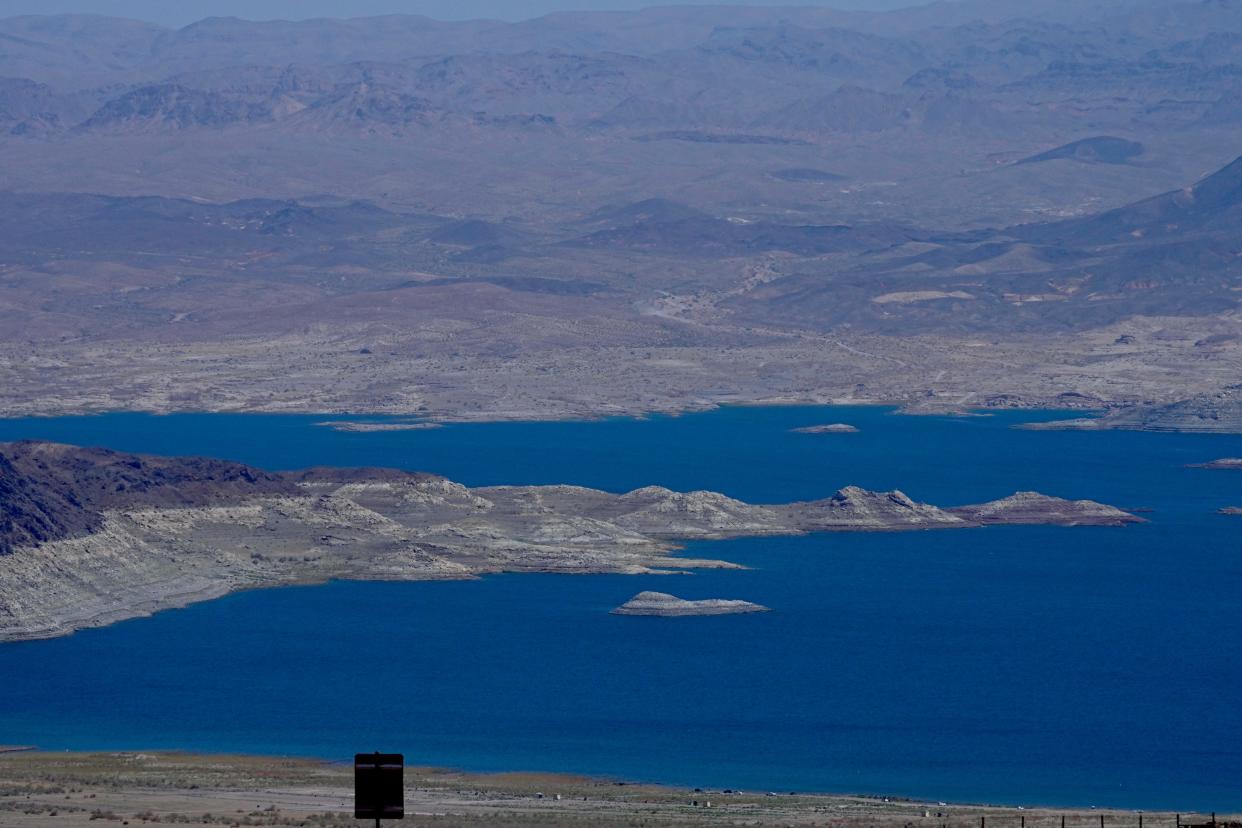Lake Mead's water levels measure highest since 2021 after 'Pineapple Express' slams California

Amid a historic water shortage, Lake Mead's water levels rose this week to the highest point in nearly three years.
According to measurements taken at the end of January by the Bureau of Reclamation, Lake Mead's water levels were reported to be 1,072.67 feet, the highest levels since May 2021, when they were measured at 1,073.50 feet.
California experienced heavy rain, winds and snow last week from an atmospheric river, also known as a "Pineapple Express," although experts told Newsweek that it would depend on the previous storm and future storms to fill the reservoirs in Lake Mead and Lake Powell in Utah and Arizona.
Where is Lake Mead?
Lake Mead is reservoir in Nevada and Arizona formed by the Hoover Dam on the Colorado River, and is the largest reservoir in the U.S. in terms of water capacity.
It was first flooded in 1935 when the Hoover Dam was created, and provides water to Arizona, California, Nevada and some of Mexico.
What were Lake Mead's water levels in 2023?
Lake Mead's water levels rose slowly throughout 2023, although the measurements were lower than in the previous two years. Water level measurements began at 1,046.97 feet in January and ended at 1,068.18 feet in December.
The lake has experienced record lows in water levels in recent years, with the first water shortage announced in 2021 after years of chronic overuse and drought.
Despite the recent higher water levels, Lake Mead's launch ramp remains closed due to the 20-year ongoing drought that have "reshaped the park's shorelines," according to the National Park Service, which operates a recreation area on the lake.
The West is running out of water: A heavy snow could help, but will it come this winter?
Is the Southwest still in drought?
Some areas of the Southwest are still in drought, although almost all of California is no longer under that classification following the recent storms.
Much of Arizona and New Mexico are classified as D0 (abnormally dry), D1 (moderate drought) and D2 (severe drought), according to the U.S. Drought Monitor. Some areas of New Mexico are reporting D3 (extreme drought) and D4 (exceptional drought) levels.
Lake Mead, which spans across Nevada and Arizona, is currently reporting abnormally dry to moderate drought levels, according to the Drought Monitor.
This article originally appeared on USA TODAY: Lake Mead's water levels rose last month, measuring highest since 2021

